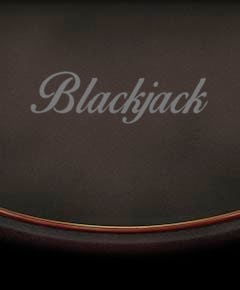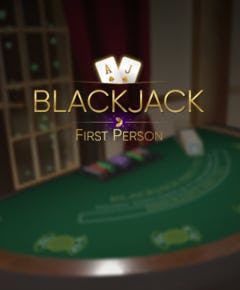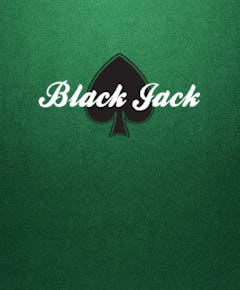Online Blackjack - Casino Guide by Casumo
How to play Online Blackjack
Blackjack is a very popular card game in which one or more players compete against a dealer (the house). There are different types of online Blackjack, but the key objective of the game is always the same: to try and win by getting as close to twenty-one as possible, without going over.
The game is played with up to 8 decks of 52 ordinary playing cards. To win in Blackjack, you must either get 21 on your first two cards (this is called a ‘Blackjack’ or ‘Natural’), reach a final score higher than the dealer without exceeding 21 or let the dealer draw additional cards until their hand exceeds 21.
Some Blackjack history
Blackjack originated from a game known simply as twenty-one. Miguel de Cervantes, the Spanish author of the adventures of Don Quixote makes the first written reference to Blackjack in his tale "Rinconete y Cortadillo", written between 1601 and 1602. In his story, he calls the game ‘veintiuna’, stating that the aim of the game is to reach 21 points without going over and that the Ace can count as either 1 or 11. Soon after the French Revolution, we find the game of Twenty-One is widespread across Europe, eventually reaching the US.
The name Blackjack came from a term used in an American version of the game. In this version, gambling houses offered a ten-to-one payout if the player's hand consisted of the Ace of spades and a black Jack. This hand was called a "Blackjack". Today, we call a ‘Blackjack’ any hand of an Ace plus a ten or face card, irrespective of suits or colors.
Most common terms used in Blackjack
After receiving your initial two cards, you can select one of the following 4 options:
- Hit - Take another card from the dealer
- Stand - Take no more cards.
- Double down - increase your initial bet by 100% in exchange for committing to stand after receiving just one more card.
- Split - If the first two cards of your hand have the same value, you can split them into two hands, each with a separate bet equal to your main bet. The dealer separates the two cards and draws an additional card on each, placing one bet with each hand. You will then continue playing out the two separate hands. Note that if you split a hand with 2 Aces, you’ll only be dealt one card on each hand and Ace + 10 in a split hand, doesn’t equal a Blackjack (you will get a normal 1:1 pay).
Card values in Blackjack
In Blackjack, the cards numbered 2 to 10 have a value that’s equal to their numbers. The Jack, Queen and King have a value of 10 while the Ace can either be one or 11 depending on what suits you best.
A hand with an Ace valued as 11 is called a ‘soft hand’, meaning that the hand will not bust by taking an additional card. The value of the Ace changes to one so that your hand does not exceed 21. Hands without an Ace are called ‘hard’.
Blackjack rules
When you play a game of online Blackjack, you’ll play against the house and your objective is to get a hand that equals or is as close as possible to 21. If at any point during the game the total value of your hand exceeds 21 you’ll lose your wager.
The minimum amount you can wager varies according to the table. Usually, minimum bets for online Blackjack go as low as €0.10 per bet (or other currency equivalents). After you place your bet, you’ll be dealt two cards, face-up. The dealer also draws two cards for the house, one face up and one face down. After the cards are dealt, you must decide whether to ‘hit’ or ‘stand’. Hit means asking for another card. Stand means you won’t take any more cards.
You can ask for as many cards as you want as long as the total of your cards does not exceed 21. If you do exceed 21, your hand is ‘bust’, meaning that you’ve lost that round. Once you stand, the dealer asks other players sitting at the table if they want to stand or hit. Once all the players around the table are satisfied with their hands or have busted, the dealer reveals the hidden card. The dealer must hit on any total that is 16 or lower and stand on 17 or higher. When the dealer stands or busts, winners are announced. A winning hand is one in which the total of your hand is higher than the dealer’s.
If all players have either busted or gotten Blackjacks, the dealer will usually not complete their hand.
How to use bet insurance in online Blackjack
Insurance is a type of side bet that can be taken only if the dealer’s up card is an Ace. The purpose of insurance is to prevent players from losing their entire bet in the event the dealer is dealt Blackjack. If the dealer gets Blackjack, you’ll get your original wager back, but you’ll lose the insurance. If the dealer doesn’t get Blackjack, the house takes the insurance bet and normal pay continues. In both cases, any win is paid as normal.
The dealer will ask whether any of the players would like insurance if the dealer draws an Ace as their first card.
Placing Bets in Blackjack
When you “take a seat” at the Blackjack table, you place a bet by selecting a coin value from the available options and simply click on the chip icon.
How to place a side bet
In most Blackjack games, you can also place 2 types of side bets which enable you to win extra money on top of your regular bet. These side bets are known as Perfect Pairs and 21+3.
How to place a Perfect Pairs side bet
If you place a Perfect Pairs side bet, you can win when the first 2 cards dealt to you by the dealer form any sort of pair, such as 2 Aces or 2 Queens. There are 3 types of pairs, each with a different payout:
- Perfect Pair - same suit ex. 2 Aces of hearts
- Coloured Pair - different suits of the same colour example, 3 of Diamonds and 3 of Hearts
- Mixed Pair - different suits of a different colour example, 9 of Diamonds and 9 of Clubs
How to place a 21+3 side bet
The 21+3 side bet gives you the chance to win if your first 2 cards + the dealer’s up card include any of the following winning combos:
- Suited Trips - an identical triplet such as 3 Queens of Hearts
- Straight Flush - in numerical sequence and same suit, for example, 10, Jack and Queen of Diamonds
- Three of a Kind - same value but different suits, such as any 3 non-matching Queens
- Straight - in numerical sequence but different suits, such as 2 of Spades + 3 of Clubs + 4 of Hearts
- Flush - non-sequential cards in the same suit, example, 2, 6 and 10 of Clubs

Choose one of our very own Casumo Blackjack tables.


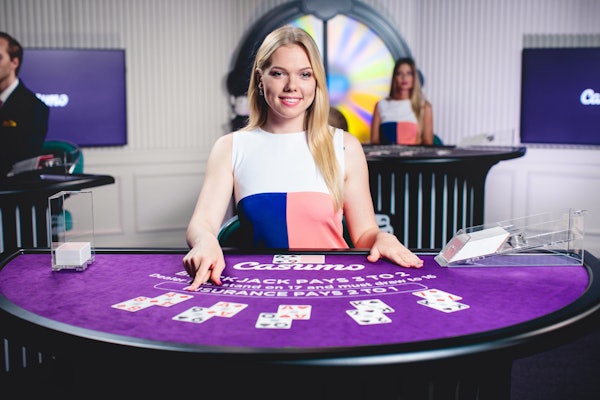
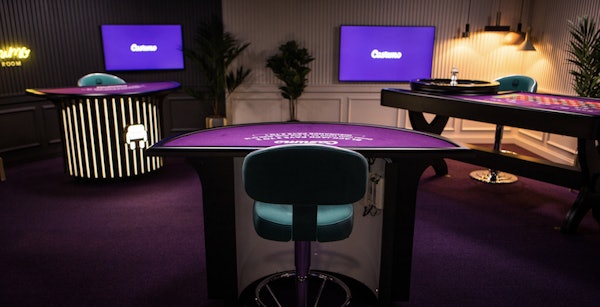
How to win at Blackjack
There is no sure way how to win at Blackjack, no matter which strategy you use.
Although many players believe they have found the ultimate Blackjack strategy toincrease their chances of winning, this simply cannot be true, no matter how long they play, how much they spend or at which Blackjack table they sit.
The sections below take a look at common strategies that have become popular among Blackjack players over the years. Please keep in mind that these are just tips and nothing more!
Blackjack strategies and tips
Although many of the Blackjack systems and strategies out there look cool and claim they work for real, we wouldn’t recommend using them. Remember that Blackjack is a game you play for fun. No mathematical formula or complex systems like Positive Progression (betting more after you win) or Negative Progression (increasing the amount you bet after a loss) will be able to defeat the house. The odds of the game remain exactly the same irrespective of which Blackjack system you use.
In the sections below we’ve taken a look at how seasoned Blackjack players play the game.
When to Double Down
When should you use the Double Down option? Many players believe that when you Double Down on a hard 11 you increase your chances of winning. This can be done against any dealer’s up card. So for example, if you have a 6 and a 5, you would Double Down.
You should also consider Doubling Down on 10 when the dealer’s up card is 9 or less. The reason is that your chances of winning increase when you hold a two-card 10 against any dealer’s up card of 9 or less.
Other Double Down strategies include Doubling Down on an Ace and a 2, through to an Ace and a 7, but only when the dealer’s up card is a 5 or 6 . The reason is that when you’re holding a soft 13 through to a soft 18, you stand to win more if you Double Down.
When and what to split
Usually, seasoned Blackjack players always split a pair of Aces, regardless of what the dealer’s up card is. They will also split a pair of 8s because it gives them better chances of winning. The reason is that when you split a pair of 8s, you will end up playing two hands each starting with an 8, rather than playing one hand of 16 and hitting.
However, some players won’t risk splitting a pair of 8s when the dealer’s up card is a 9, 10, or Ace.
On the other hand, you should never split a pair of 5s. This is because two 5s make a hard 10 and you get better odds by hitting on a 10 than on two hands each starting with a 5. The same reasoning goes for a pair of 10s. Keeping them together as a hard 20 makes for a greater winning play in all circumstances.
When and what to hit
When the dealer’s up card is 2 or 3, you should always hit a hard 12.
If your hand is a soft 18 (Ace + 7) you should always hit when the dealer’s up card is 9, 10, or Ace. If you draw a small card, like an Ace, 2, or 3, you’ll have a hand higher than 18, which improves your chances of winning. And if you draw a ten-valued card, you’ll still be in a good position.
When to stand
Most players split a pair of 9s when the dealer’s up card is 9 or less. But when the dealer shows a 7, they prefer to stand because the odds of winning are better than splitting. This is because there is a good chance that the dealer will draw a ten-valued card (there are four times as many ten-value cards in a deck than other cards). If this happens, then the dealer would get 17. And your pair of 9s, which is a hard 18, would beat the potential 17.
How to start playing Online Blackjack at Casumo
- All you need to do to play Online Blackjack at Casumo is log in with your Casumo account using your computer or mobile. Don’t have an account yet? Sign-up for a free account below.
- Once logged in, make a deposit and head off to the Game Browser.
- Select the Table Games tab.
- Choose the Blackjack game you want to play, like Classic Blackjack, Blackjack Neo,Netent's Blackjack HDorBlackjack Plus.
- Select the amount you want to wager.
- Place your bet and have fun! If you want to try other Casumo casino games, like Roulette or Slots, you can have a look at our Casino Games Guide.
